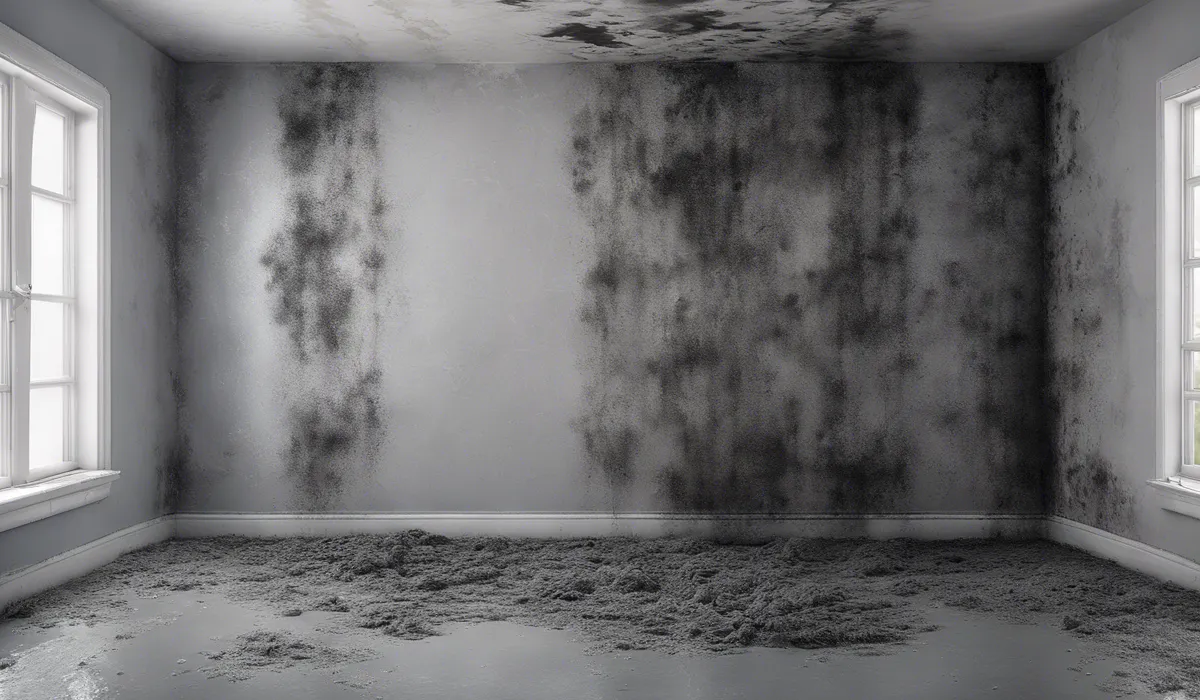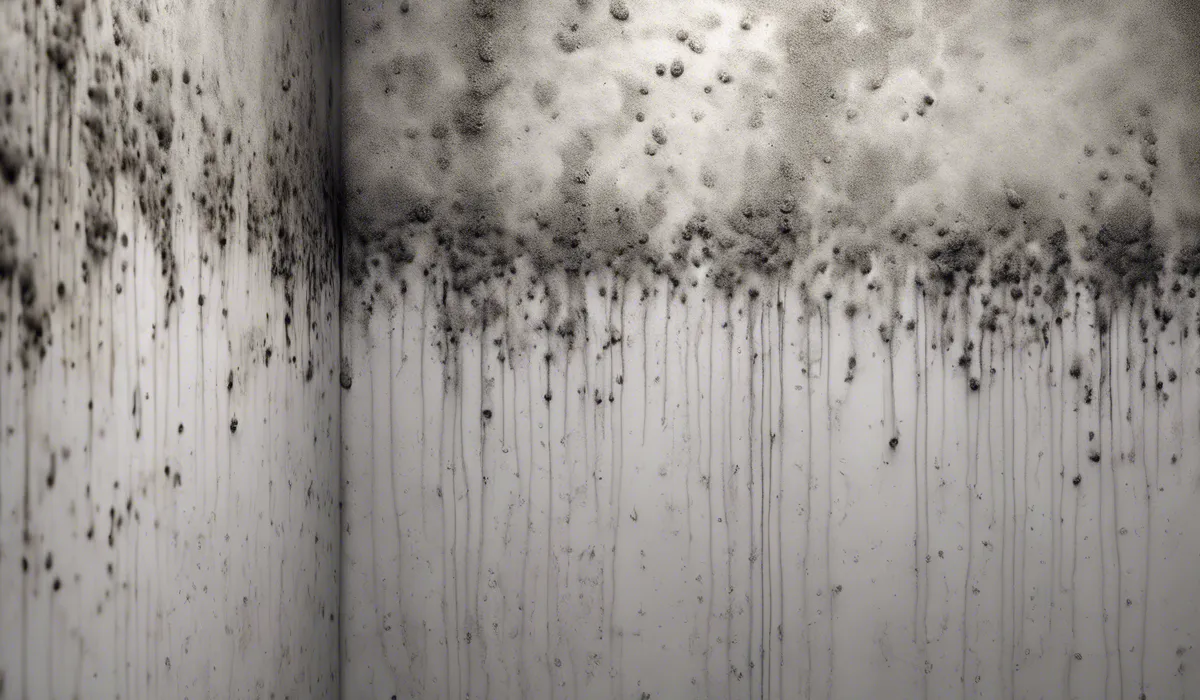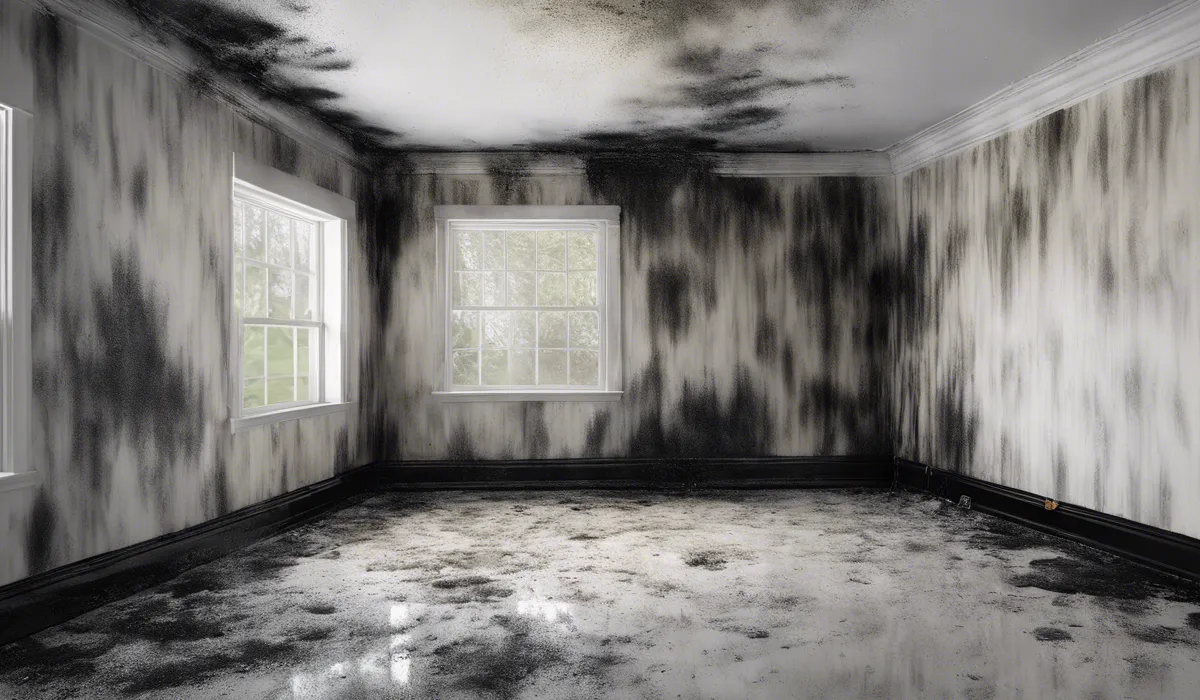Black mold, specifically Stachybotrys chartarum, is a toxic mold known for releasing mycotoxins, which can pose health risks. Regular molds are typically non-toxic and include a variety of species like Cladosporium or Aspergillus, which are less harmful but can still cause allergies.
Understanding Molds: Basics and Types

Definition of Mold
Mold is a type of fungus that grows in multicellular structures called hyphae. These organisms reproduce by releasing spores that can travel through the air.
Mold plays a crucial role in the environment by breaking down dead organic matter, but it can become problematic when it grows indoors.
Common Environments Where Mold Thrives
Molds love moist, warm, and poorly ventilated areas. They commonly appear in places like bathrooms, kitchens, basements, and areas where there has been water damage or leaks.
Mold spores can settle in these environments and start to grow on various surfaces, including wood, paper, carpet, and foods.
Differences Between Regular Molds and Black Molds in Appearance
Regular molds can appear in a variety of colors, such as green, white, or blue, and typically look fuzzy or slimy.
Black mold, on the other hand, is usually dark green or black and has a more powdery appearance. It’s important not to judge mold by its color alone, as it can be misleading.
Types of Molds Commonly Found in Homes
A variety of molds can be found in the home environment. Aspergillus, for example, is a common mold that often grows on food and in air conditioning systems.
Cladosporium is another regular mold that you might find on fabrics and wood surfaces. Unlike black mold, these molds are not typically associated with severe health risks but can still cause allergies and respiratory issues.
The Risks of Black Mold Compared to Regular Mold

Health Implications of Regular Molds
Exposure to regular molds can lead to allergic reactions, asthma attacks, and irritations of the eyes, skin, nose, throat, and lungs.
People with weakened immune systems or mold allergies may be more sensitive to these molds. While not typically life-threatening, these health issues can significantly impact one’s quality of life.
Specific Dangers of Black Mold (Stachybotrys chartarum)
Black mold is notorious for its ability to release mycotoxins, which are toxic substances that can lead to more severe health problems.
Prolonged exposure to these mycotoxins has been linked to symptoms such as chronic coughing, fatigue, persistent headaches, and even neurological issues in extreme cases.
Symptoms of Exposure to Black Mold
When exposed to black mold, individuals may experience various symptoms such as sneezing, coughing, sore throat, runny nose, and skin rashes.
In more severe cases, symptoms can escalate to difficulty breathing, nausea, and immune system suppression.
Long-term Health Effects
Long-term exposure to black mold can have serious health consequences, potentially leading to conditions like asthma, memory loss, and depression. It’s critical to address mold issues promptly to prevent these long-term effects.
Prevention and Remediation Strategies

Tips for Preventing Mold Growth in Homes and Buildings
Preventing mold starts with controlling moisture levels. Fix leaks, clean up water damage promptly, and ensure that your home is well-ventilated.
Using dehumidifiers and air conditioners can help maintain a dry environment, especially in areas prone to dampness like basements.
Importance of Humidity Control and Proper Ventilation
Maintaining a humidity level between 30-50% in your home is vital for preventing mold. Ensure that bathrooms, kitchens, and laundry rooms have good ventilation to prevent excess moisture from becoming trapped.
Guidelines for Safe Mold Removal and When to Call Professionals
For small mold problems, you can clean the surfaces with soap and water or a mold-killing product.
However, if the area affected by mold is larger than 10 square feet, it’s best to call professional remediators who have the necessary equipment and safety gear to handle the problem.
Remediation Process for Regular Mold vs. Black Mold
The remediation process for regular mold typically involves cleaning and drying the affected areas.
For black mold, professionals take extra precautions, such as using containment areas and HEPA filters to prevent spores from spreading during removal.
They also wear protective gear to shield themselves from mycotoxins. Afterward, they may recommend measures like sealing surfaces to prevent future growth.
FAQs About Black Mold vs Regular Mold
What is the difference between black mold and regular mold?
Black mold, or Stachybotrys chartarum, is a toxic mold that releases harmful mycotoxins, while regular molds, such as Cladosporium or Aspergillus, are typically non-toxic and less harmful, though they can still cause allergic reactions.
How can I identify black mold in my home?
Black mold is characterized by its black or dark green appearance and slimy texture, often found in damp, moist areas with poor ventilation. However, accurate identification usually requires professional testing.
Is black mold more dangerous than regular mold?
Yes, black mold is considered more dangerous due to its ability to produce mycotoxins that can cause serious health issues, unlike regular molds that are generally non-toxic and mainly cause allergies.
Can regular molds become toxic like black mold?
No, regular molds do not become toxic like black mold; each type of mold has specific characteristics, and not all molds produce mycotoxins that are hazardous to health.
What should I do if I find black mold in my house?
If you find black mold in your house, you should contact professionals for removal due to the potential health risks associated with handling toxic mold.
Final Thoughts
Black mold, or Stachybotrys chartarum, is a hazardous type of mold that releases mycotoxins, leading to significant health risks.
Contrarily, regular molds, such as Cladosporium and Aspergillus, are generally non-toxic. While they can provoke allergic reactions, they are considered less dangerous than the toxic black mold.
